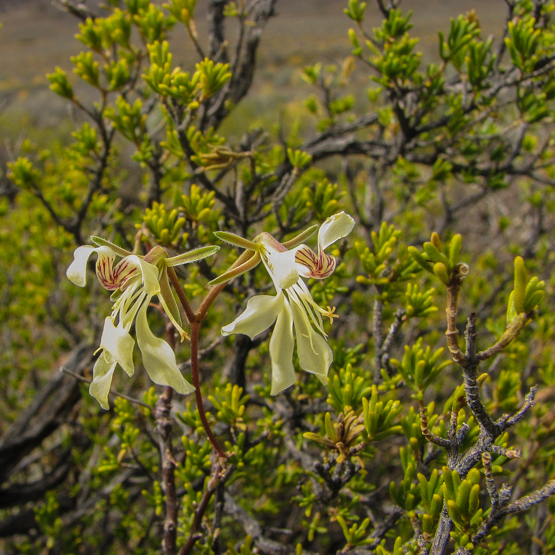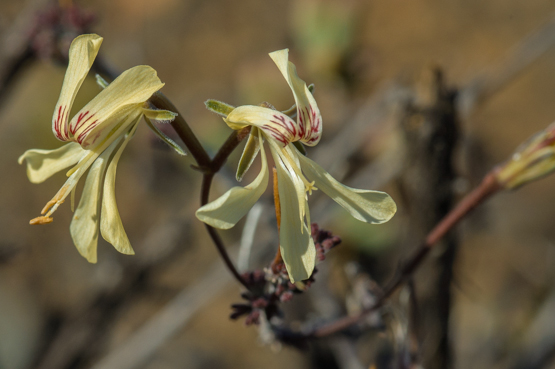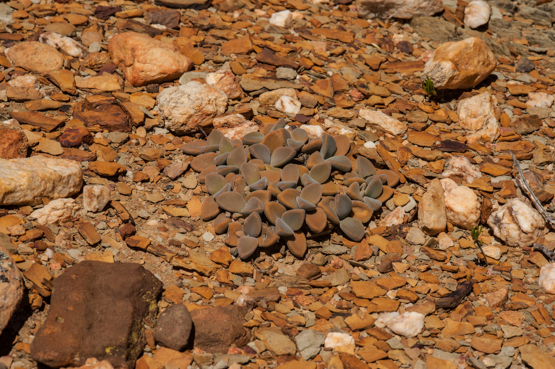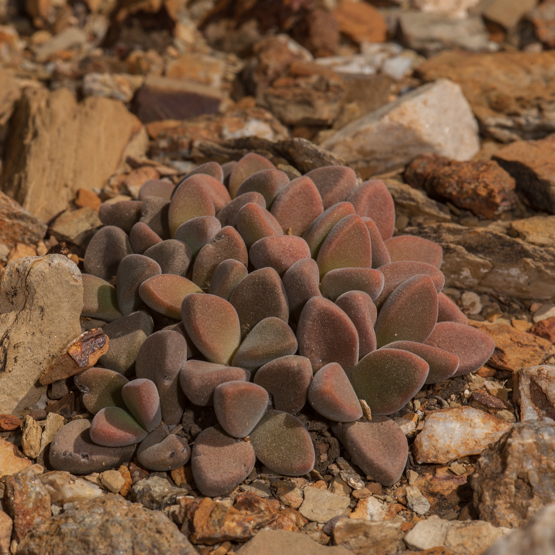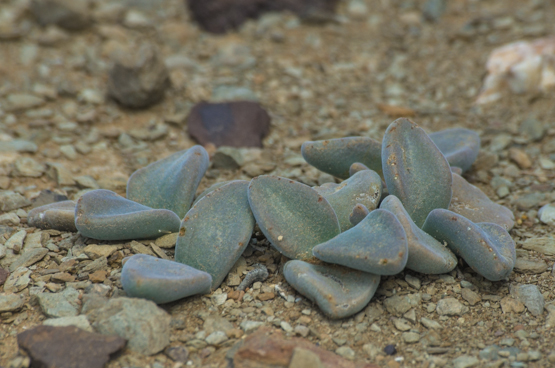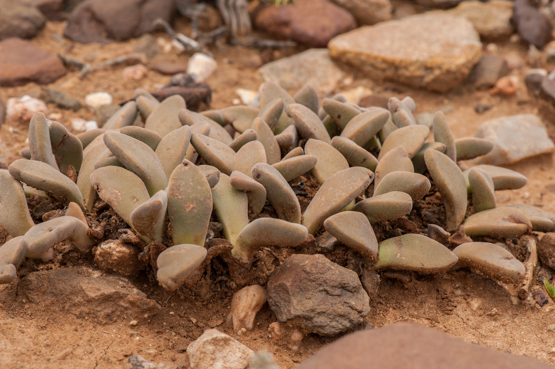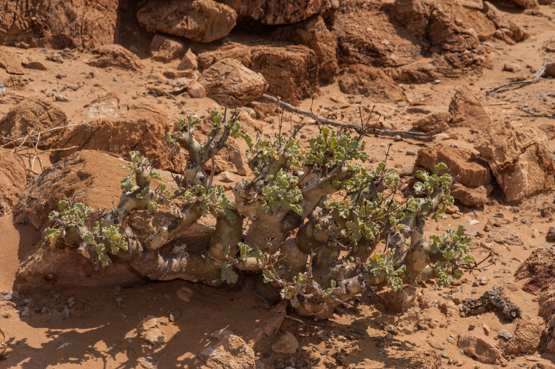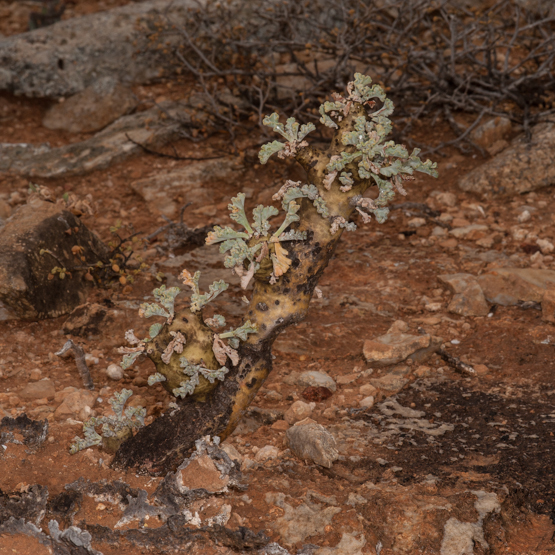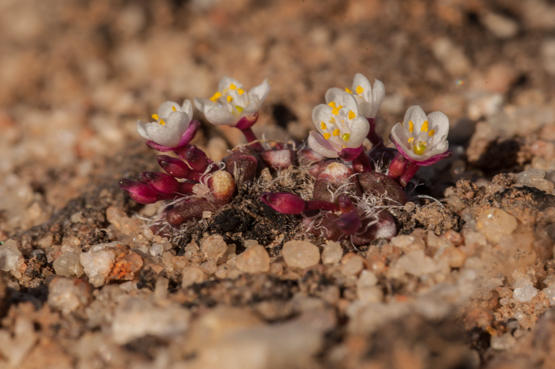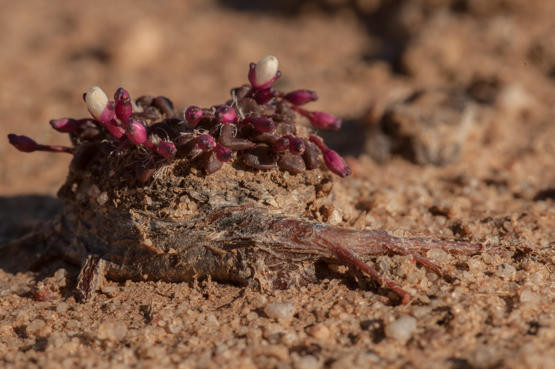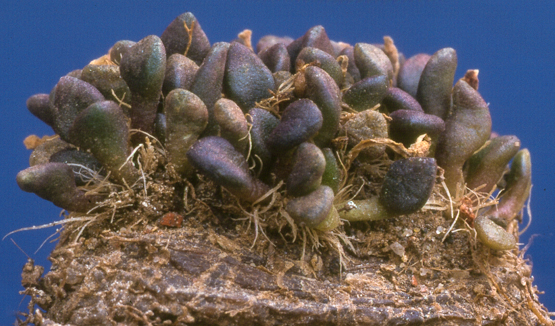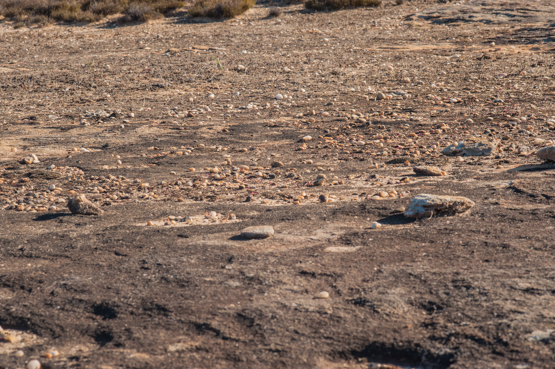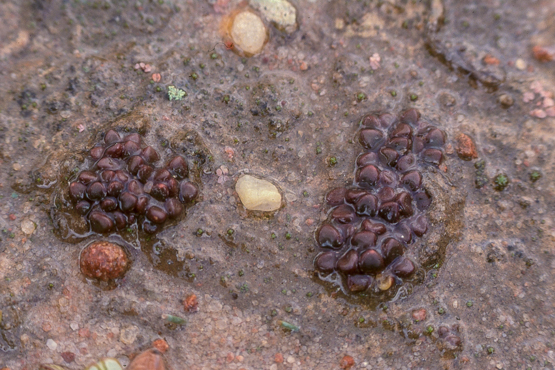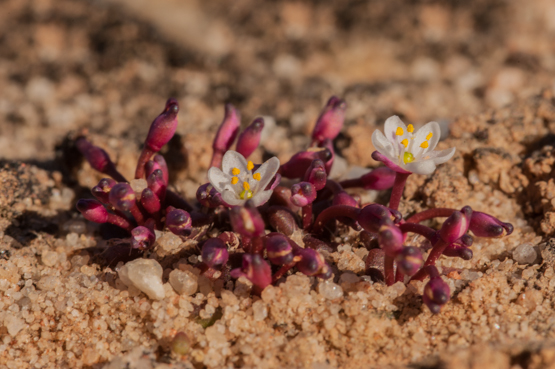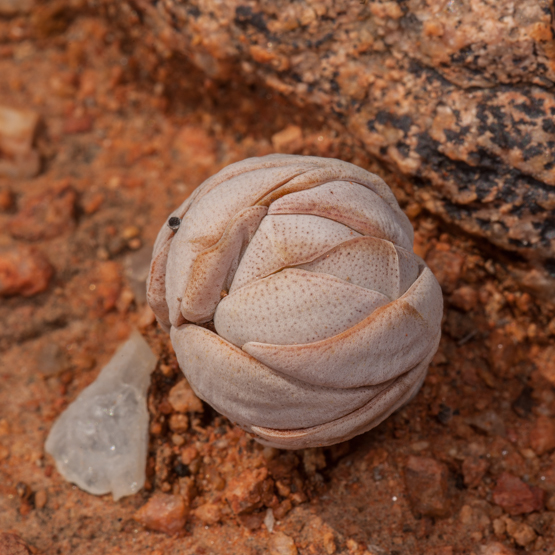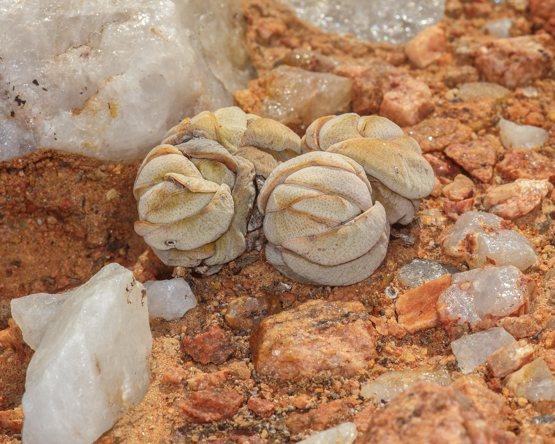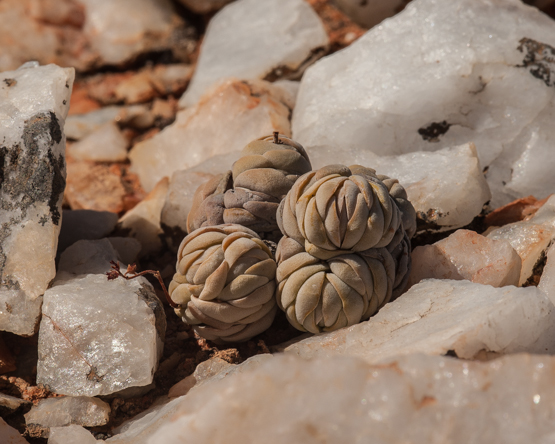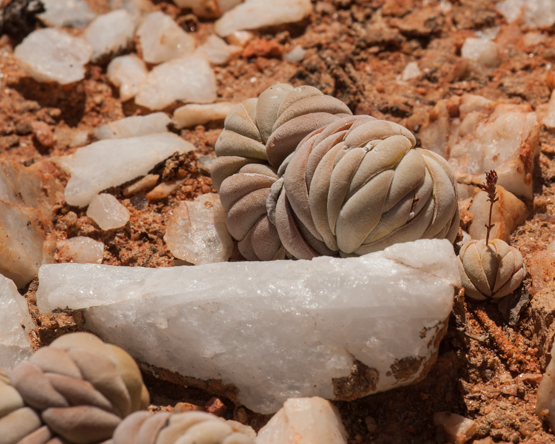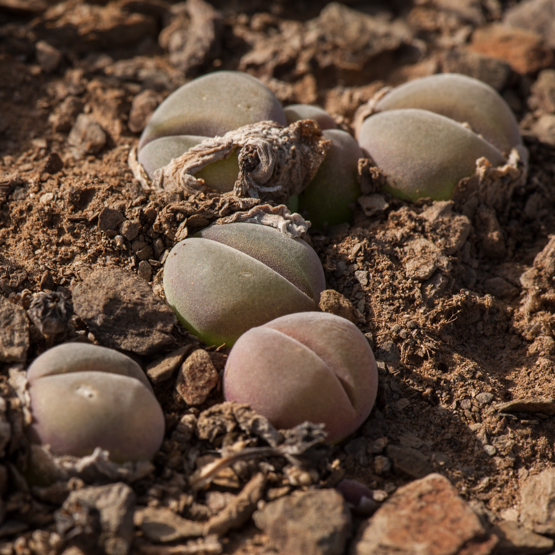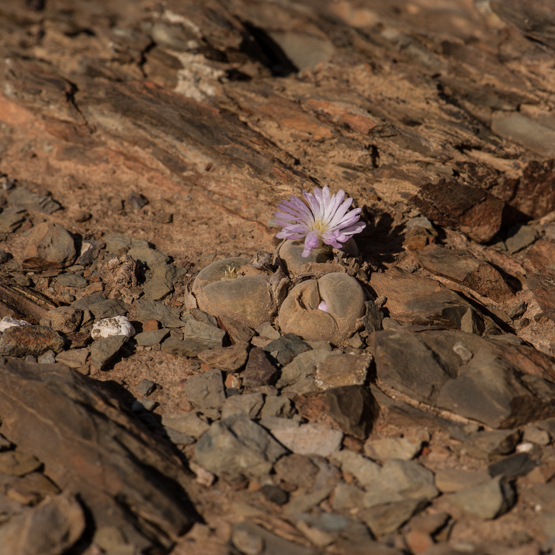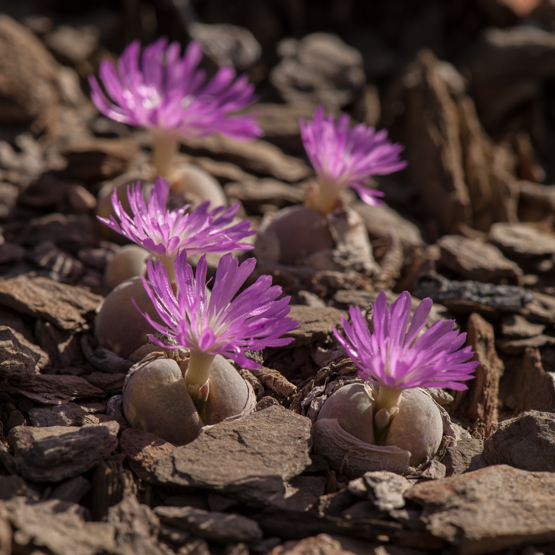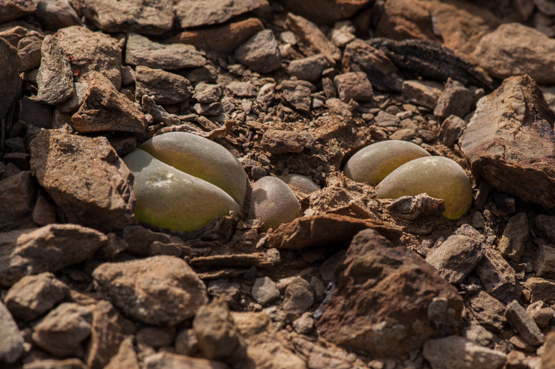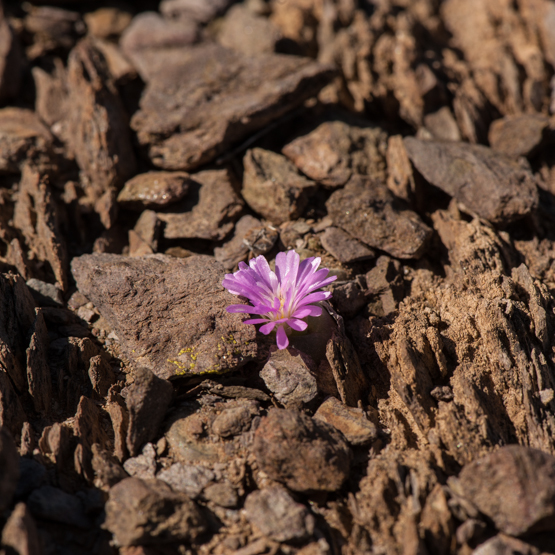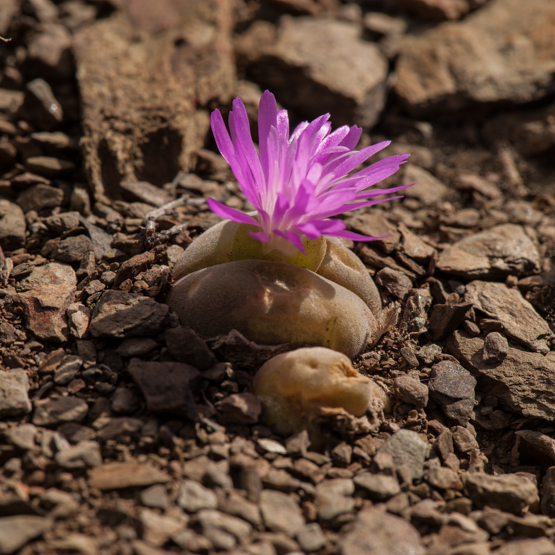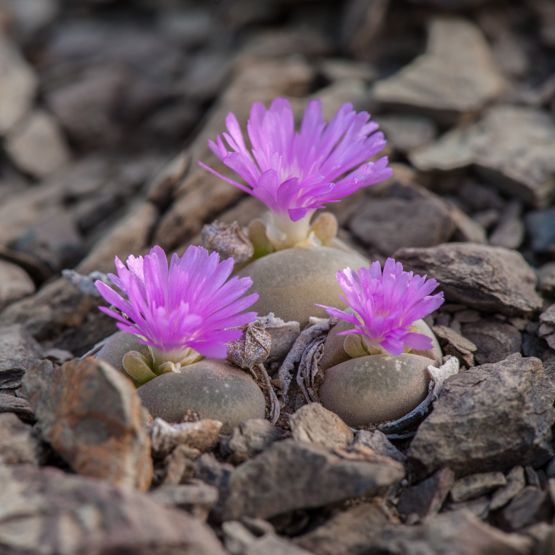“This species has little horticultural appeal, always looking as if it were more than half dead.”
How about that for a recommendation? It comes from “Pelargoniums of Southern Africa” vol. 3. and yes, if you have space for just one more Pelargonium in your collection, this will not be high on your wants list.
But if you are in the field somewhere between January and April, when very little else is flowering, the white, pale yellow or pink flowers sticking out from a shrub, are a welcome sight.
The plants are shrublets of up to 40 cm tall. with thin, slightly woody stems and parsley-like, somewhat succulent leaves. The species is widely distributed from the vicinity of Kleinzee in Namaqualand to Oudtshoorn in the eastern Little Karoo. This is part of the winter rainfall area, with very hot summers and cool, but mainly frost free winters. Without flowers the plants are difficult to find, as they are always growing within other shrubs.
Deilanthe peersii (2)
Deilanthe peersii (1)
Deilanthe comprises only three species and is usually incorporated in Aloinopsis.
D. hilmarii has erect leaves about as wide as thick.
D. peersii and D. thudichumii have more spreading and much wider leaves. They are in fact so similar that the Illustrated Handbook of Succulent Plants tells us that they are distinguished only by
–1 the fact that the flowers of D. thudichumii are open between 3 p.m. and 9 p.m. and those of D. peersii between 8 p.m. to 2 a.m.
— 2 some differences in flower morphology
— 3 different pollinators.
Not surprisingly, the book also suggests that D. thudichumii “may therefore be better placed as a subspecies in D. peersii”.
D. peersii, like its siblings, produces a very fat rootstock with quite short stems, each forming only one pair of velvety leaves per season. The plants occur from Laingsburg in the southwest to Fauresmith in the northeast. The rainfall is mostly in summer.
Although the species is widespread, it is not well known. It is probably often overlooked because the plants are low on the ground and the dark grey or brownish leaves are similar to the surrounding shale.
The first picture was taken near the eastern entrance to the Anysberg Nature Resereve (26 Sept. 2006). The other two show plants growing next to the road from Klaarstroom to Willowmore, just east of the provincial border (26 Dec. 2012).
Pelargonium klinghardtense (2)
Pelargonium klinghardtense (1)
This species occurs on both sides of the Orange River, from the Klinghardt Mountains in the northwest to Witputs in the east. With an annual rainfall of about 70 or 80 mm (occurring in winter) this is a very dry area. In many years there is even hardly any rain at all. The good news is that the meager amount of rain is supplemented by early morning mists throughout the year.
The plants grow on or against rocky outcrops, more or less in the open. They flower mainly between May and September.
Anacampseros comptonii (2)
Anacampseros comptonii (1)
When you have a first look at the kind of habitat this species is found in, it looks bare and desolate.
The photo below was made in the beginning of April after good rains, so one would expect a lot of activity going on. And there is, but the plants growing here are so small, that you have to look properly to see them. Accidentally, the other interesting dwarf succulent growing in this spot near Nieuwoudtville is a Conophytum named after the same person (Prof R.H. Compton, the second director of the National Botanical Gardens in South Africa). More about that at a later stage.
The plants grow in very shallow depressions in flat sandstone rocks. After rains, the depressions are filled with water and the little plants are often completely submerged for some time. The following picture was taken in September.
In the dry period the plants are often almost invisible (the picture below was taken in November). Can you see the little caudexes?
The last picture gives a better idea of how charming these miniatures are when in flower (the caudexes are only 1-2 cm in diameter and 1-1.5 cm tall) .
Crassula alstonii
It is probably safe to say that C. alstonii cannot be confused with any other plant species because of its unique appearance. The leaves are arranged in two rows and closely adpressed – at least in nature; in cultivation this is difficult to maintain. Each of the almost spherical rosettes is 2-5 cm in diameter.
The plants are found in northern Namaqualand, from just south of Lekkersing to near Komaggas, where they grow on low, gently sloping hills usually covered with quartzite gravel. This is a rather restricted distribution area, but in some places the plants are quite common.
Gibbaeum nebrownii (2)
Gibbaeum nebrownii (1)
It has taken me a couple of years to be at the right spot at the right time to photograph this species in flower. I knew of only one small locality, some 130 kms from where I lived and the few times I went there they were not in flower. Nowadays I live much nearer, but the main thing is that I found out that the plants flower a few months earlier than almost all other Gibbaeums (late April and early May). Anyway, yesterday I went there with two friends and lo and behold: there they were, in full bloom.
“The Gibbaeum Handbook” by G. C. Nel (1953), gives the following information:
The shale hillocks, on which it seems to thrive best, consist of laminated shales and are entirely devoid, at times, of any other vegetation. They are quite bare and G. nebrownii is embedded in the soil and only the top surface is exposed. During the hot summer months, it is withdrawn into the soil and one only sees a brown membrane, the remainder of the old leaves, and is, consequently, very difficult to find. It resembles a Lithops or an Ophthalmophyllum in this respect. It is squeezed into the crevices between the slate layers”.
The species is only found sporadically in the western part of the Little Karoo.
The first two pictures were taken 30 June 2013, the others 4 May 2014
